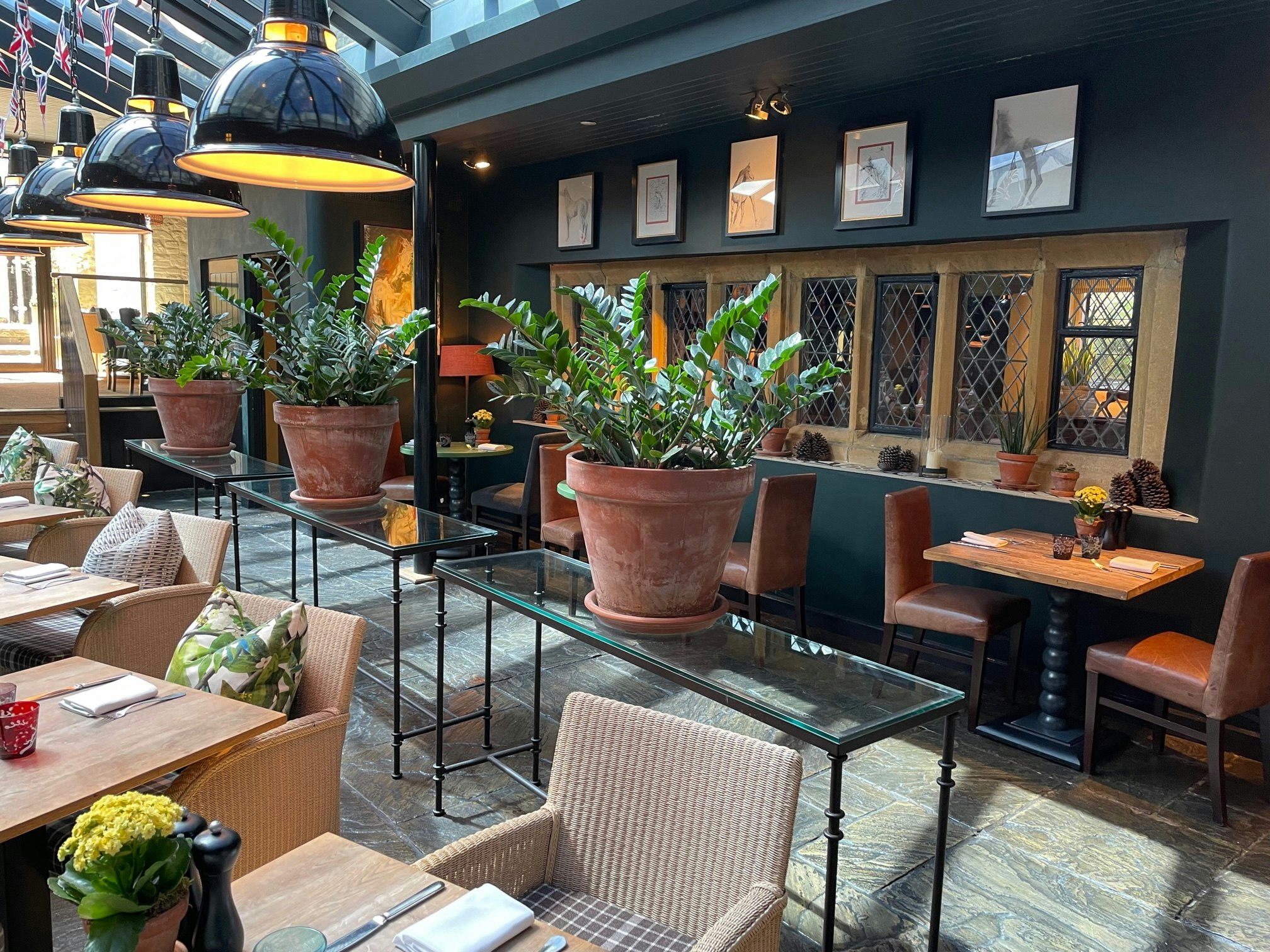Ten Historic Cotswold Villages Near Broadway
Nestled in the heart of the picturesque Cotswolds, the area surrounding Broadway is home to several historic small villages, preserved with their charm and character.
Here’s our guide to ten of these delightful places, each offering a glimpse into England's rural past, with bags of atmosphere and captivating landscapes.
Snowshill
Pronounced ‘Snozzle’ by many locals, Snowshill is situated just a few miles northwest of Broadway. It’s a typical Cotswold village which might look somewhat familiar to visitors thanks to an appearance in the winter scenes of the first Bridget Jones’s Diary film. It’s also well known for the Snowshill Manor National Trust property, an impressive 16th-century manor house, made even more wonderful by the impressive worldwide collection of eclectic treasures gathered by its previous owner, Charles Paget Wade. Wade seemed to have a fascination with collecting - you’ll see everything from old keys to Samurai armour. Snowshill Manor is one of the most visited properties in the Cotswolds.
Snowshill village has an idyllic setting, with historic stone cottages grouped around its churchyard and the Victorian St Barnabas’ Church.
Cotswold Lavender is nearby too.
Stanton
Located south of Broadway, Stanton is a picture-perfect village with hollyhock-fenced cottages and a tranquil atmosphere.
The village’s historic charm is best expressed in St. Michael's Church, a medieval gem with exquisite stained glass windows and an ancient yew tree. Inside the pew-ends are worn thin by the chains of sheep-dogs, tied there over the centuries. This Grade 1 listed church was frequently visited by Charles and John Wesley
Stanton has also appeared as a film location - in the Jeremy Brett ‘Sherlock Holmes’ series, the village’s long High Street is the scene for the ‘Last Vampyre’ story. There’s a famous walker’s pub at the top of the village.
Stanway
A short distance to the northeast, Stanway is a real hidden gem, boasting a magnificent Jacobean manor house. Stanway House showcases stunning architecture, including its iconic gatehouse and a striking 300-foot fountain, one of the tallest gravity-fed fountains in the world. Stanway is held in great affection by those who have visited, possibly because it is not a typical slick English country house operation - you’ll need to pay cash, for example - and it is only open for a couple of days a week in the summer months, but the reward is true architectural gem and the atmosphere of a family home.
Winchcombe
To the east of Broadway, Winchcombe is an historic Saxon town which is considered a regional capital favoured by the Kings of Mercia. Later it boomed during the medieval wool era and was also a centre for pilgrimage. Visitors came to the shrine of Saint Kenelm, and also to Hailes Abbey (which you can also visit), a Cistercian monastery which housed a phial said to contain the blood of Christ. Winchcombe prospered through the business of inn keeping and a lively trade in pins and souvenirs.
Just on the edge of Winchcombe is Sudeley Castle, a popular attraction. The chapel is one of those places in England where you feel the weight of history, with the atmospheric tomb of Queen Katherine Parr (Henry VIII’s last wife). Outside, there are beautifully manicured gardens, with the Rose Garden a particular highlight.
The town is at the heart of many good walking routes and runs a Walkers Festival every year. Meanwhile you can tap in your desired length and difficulty of walk on the website, year round.
Chipping Campden
Just a short drive uphill from Broadway, Chipping Campden is a medieval market town renowned for its elegant High Street, lined with Cotswold stone buildings from the 14th Century onwards. Many visitors stick to the High Street, but Campden deserves a little more time spent to discover the historic Guild buildings (there’s an excellent secondhand bookshop nearby) and the Court Barn Museum.
Court Barn introduces the craftspeople, designers and artists working in the north Cotswolds from 1900 to the present day. 50 London Guildsmen and their families moved to Campden in 1902 with C.R. Ashbee, architect, designer and a leading figure in the Arts & Crafts movement. It’s a remarkable story and Court Barn is a ‘must’ for lovers of arts and crafts.
Graham Greene lived in the village during something of a crisis in his career, writing the novel that turned his fortunes around, Stamboul Train.
Broad Campden
Even amongst those who live in the area and might be expected to be familiar with its charms, Broad Campden is noted for its beauty. It’s only a stone's throw away from Chipping Campden, but has a more serene ambiance. Spend time exploring streets lined with historic houses, such as the photogenic Grevel House, with its magnificent wooden gable.
Broad Campden is also in excellent walking country.
Ebrington
Ebrington is another lesser-known village, boasting thatched cottages, an excellent traditional country pub, and a sense of timeless beauty.
Blockley
Southeast from Broadway is the village of Blockley. It flourished during the Industrial Revolution and is known for its textile heritage. These days though, it is a genteel place, used for Father Brown TV locations and loved for its quiet streets, and the 12th-century church of St. Peter and St. Paul. There are great views of the surrounding countryside and a rather posh village cafe.
Bourton-on-the-Hill
For a long time Bourton-on-the-Hill was somewhat overlooked by visitors, but it was recently named as one of the most desirable places to live in Britain. It also received a boost with a rave review from Adam Frost for the remarkable Bourton House Garden on BBC’S Gardeners World. In fact there are three gardens almost within walking distance - Bourton House, Batsford Arboretum and the extraordinary Neo-Mughal Sezincote House.
Lower Slaughter
West of Broadway, Lower Slaughter is ‘instant’ Cotswolds with a riverside setting and the sort of cottages that make an estate agent’s eyes light up. It’s a gem, often combined with a visit to nearby Bourton on the Water,
We firmly recommend taking an hour or so to walk the circular route between Upper and Lower Slaughter (on busier days, parking might be easier at Upper Slaughter).
Each of these ten historic villages near Broadway offers a distinct character. There’s no need to visit all of them during a short stay, but add one or two to your Broadway break and you’ll certainly get a glimpse into the heritage of the Cotswolds.


